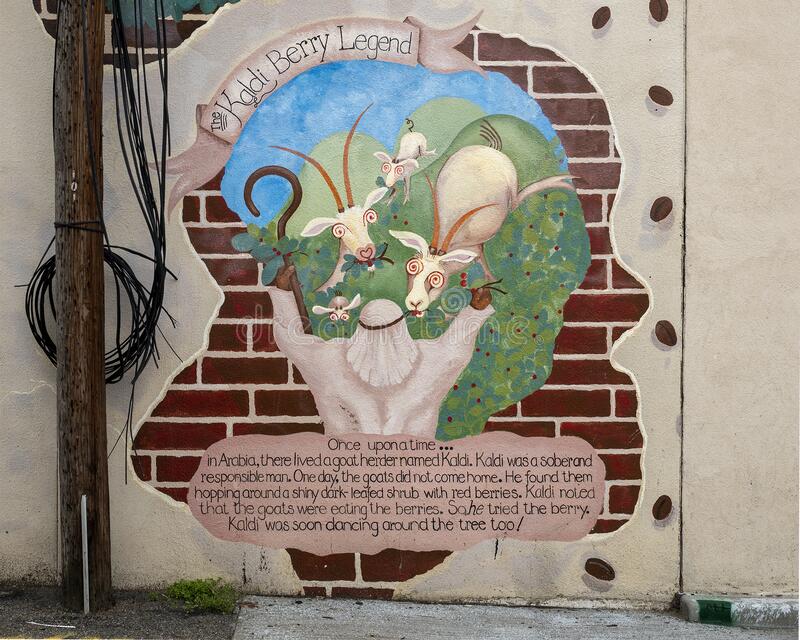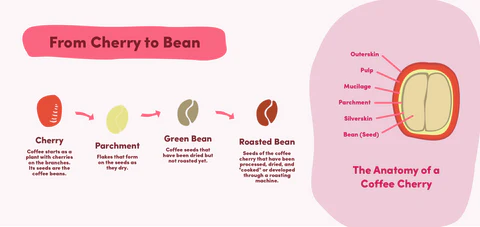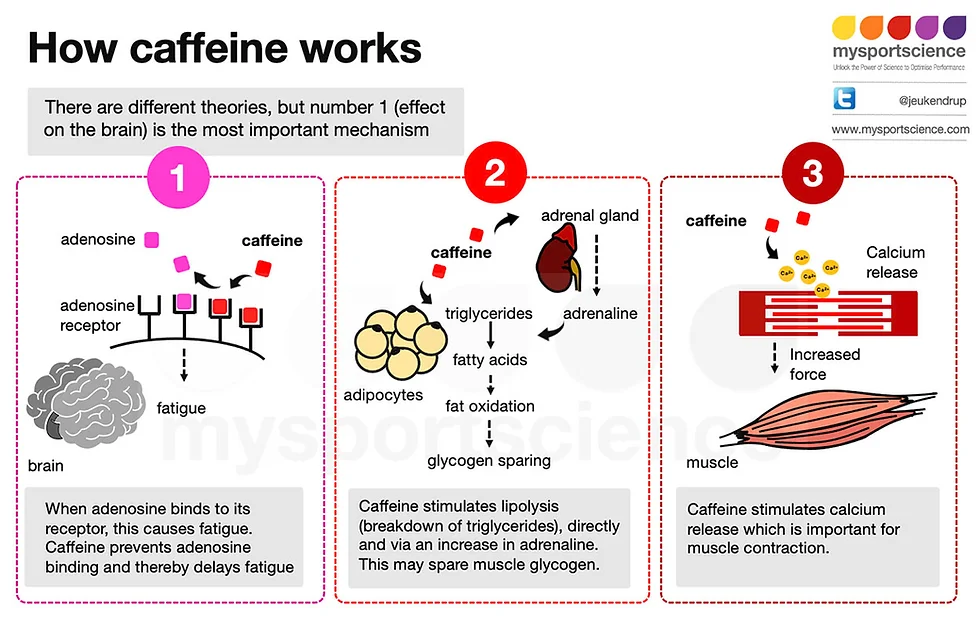By Frangiska Mylona,
Coffee, oh Coffee! Most people’s first thought in the morning is about this delicious drink. Besides its rich and strong taste, it acts as an energy booster, making it a suitable choice for a full and productive day. In addition, it appears that people cannot live with just one cup of coffee but rather, tend to drink more and more to the point that it becomes dangerous.
Its production and consumption are growing rapidly. It is reported that 110 to 120 million bags of coffee are produced each year!
The history of coffee and how it ended up in our hands is fascinating. In the beginning, the story takes place in Africa, specifically in Ethiopia, and is centered around the legend of Kaldi. In this legend, a shepherd found a goat eating an unknown type of berries resulting in the goat becoming hyperactive. The shepherd was so surprised that he took the beans to a monastery. This monk believed that these beans were the devil’s product and decided to burn them causing the aroma and flavor to spread throughout the air. When the monks tasted this flavor, they changed their minds. They placed the beans in water and drank it. They realized that this helped them to stay alert and pray more vividly.

With this incident, the fame of coffee spread to the Arabians. They not only drank it as a beverage but also mixed it with food to preserve it for their long journeys. Later in history, coffee arrived in Europe around 1600 and it spread from Italy to the rest of the continent. At that time, coffee had become a staple, a fashionable drink, a delicious drink, and a must! Interestingly, Europeans thought that coffee had an Arabian origin until the 20th century when scientists discovered coffee’s true origin.
It is estimated that there are 70 species of coffee, of which only three are processed; coffee arabica, coffee canephora, and coffee liberica.
The processing is based on four complex procedures that aim at the removal of the coffee bean from its cherry coat.
More specifically, the processes are:
1. The natural way is by; sorting, drying, fermenting, and depulping the seed from its cherry. The result is a ”sweeter” taste to the coffee.
2. The washed process consists of sorting, depulping, and then washing and drying. This results in a more ‘’crispier’’ taste of coffee.
3. The wet-hulled process; includes sorting, depulping, fermentation hulling, and drying, where the mucilage remains on the coffee bean during drying. The result of this is a coffee with a more robust taste.
4. Lastly, there is the honey processing including; sorting, depulping, drying, fermentation, and hulling, where when the seed drys the mucilage stays intact.

The roasting process begins once the coffee bean has been collected. In the beginning, the coffee seed is green and then it changes color based on the roasting level. The lowest level leaves a green bean, while the highest level leaves a dark brown bean.
In general, there are four types of roasting; unroasted, light roast, medium roast & dark roast.
The chemical constituents of coffee are caffeine, tannin, fixed oil, waxes, carbohydrates, and proteins. It is also a rich source of magnesium, which can help in controlling blood sugar and it can be used as an antioxidant.
Coffee can be beneficial in many situations:
- Evokes alertness that keeps one active throughout the day
- There is evidence that coffee is effective against headaches due to caffeine’s vasoconstriction properties
- There is an indication that it may lower the risk of diabetes type 2
- There is a lower risk of Parkinson’s disease and slower progression of Parkinson’s disease, dementia, and Alzheimer’s disease
- It can promote weight loss, especially in men
- Reduce the risk of heart disease and stroke
- Aids against depression
- It could possibly extend its lifespan.
The question that arises when thinking about coffee is not about its flavor and taste but about its ability to keep people awake and alert. This process relies on caffeine, the famous ingredient in coffee. Besides coffee, this substance can also be found in some energy drinks, green tea, and other items.
Its mechanism of action places caffeine within the class of drugs that act as stimulants of the central nervous system (CNS). More specifically, it is an adenosine receptor antagonist. The adenosine receptors are found in the brain, heart, lungs, spleen, testis, liver, and large intestines. There are many types of adenosine receptors like the A1, A2A, A2B, and A3ARs but caffeine acts more vividly on the A2A receptors in the brain.
Simplifying the above, adenosine apart from being a nucleoside base playing an important role in genetic material expression and preservation, is also an energy source in the form of adenosine triphosphate (ATP). In the brain, ATP is converted into adenosine monophosphate (AMP), which is ultimately a by-product. As the brain is active for more and more hours during the day more ATP is used. This is why AMP is concentrated in the brain in greater quantities during the day. As mentioned previously, adenosine receptors detect these high levels of AMP and send signals that make us sleepy or make us feel like resting. This is the spot where when caffeine is consumed since it is an antagonist of the adenosine receptor, it binds to them and it does not allow the signals that are produced from the receptors to inform the brain about the increased AMP level or the ″building up of tiredness”. Therefore, the person continues to feel alert.
Apart from blocking AMP on the adenosine receptors, caffeine seems to play some roles in metabolic mechanisms. Specifically, it induces lipolysis which simply means that it triggers the ″fat burning″ process that requires the breakdown of triglycerides, and also it inhibits lipogenesis which is the process involving the formation of fatty tissue. As a result of the adenosine receptor blocking function, where the brain is stimulated, the pituitary gland is prompted to maintain body alertness. The pituitary gland stimulates the adrenal glands (which sit on top of each kidney) to release adrenaline which plays an active role in the stimulation of lipolysis.
Lastly, caffeine induces muscle contraction by triggering calcium to be released. Apart from stimulating calcium release, it is also suggested that it blocks calcium reuptake into muscle tissue and that possibly it increases the sensitivity of the muscle fibers to calcium ions.

As it is understood, caffeine is absorbed rapidly and is distributed easily throughout the body and it crosses the blood-brain barrier even after average consumption. However, it needs to be consumed sparingly in order to avoid the adverse effects of caffeine, including:
- Insomnia
- Mild delirium
- Caffeine can be a mildly addictive substance
- Diuresis
- Dehydration
- Caffeine can have a negative effect on pregnancy or it can make the conceiving process more difficult for women who wish to conceive. It also travels through the placenta and through breast milk. Therefore, it is wise to discuss coffee intake with your doctor when trying to conceive.
- Caffeine increases gastric acid secretion that can provoke the heartburn sensation.
- Caffeine can stimulate uterine muscle contractions that can amplify pain and discomfort during the menstrual cycle.
- Cardiac arrhythmias, tachycardia, and clonic-tonic convulsions occur at high levels of caffeine.
In the bibliography, there are 18 cases of fatality from high dosages of caffeine mostly from energy drinks. Therefore, it is advisable to consume coffee in moderation. The lethal dose of coffee is around 10 grams.
In conclusion, coffee is and will be a drink of choice for the majority of people around the world. As a product from its beginning till now it has achieved glory. New breeds, tastes, aromas, and flavors accompany it every year. The human body can benefit from its healing properties, as well as become more awake and alert. To avoid harm, it should be consumed in moderation, so that its effects and taste can be combined without being overwhelming.
References
- Daniella Balduino Victorino, Marcia Jonathas Guimarães-Marques, Astrid Nehlig. Caffeine consumption and Parkinson’s disease: a mini-review of current evidence
- The History of Coffee. coffeemuseum.ae. Available here
- Caffeine: How it works and myths surrounding it. chemistryhelpcenter.org. Available here




